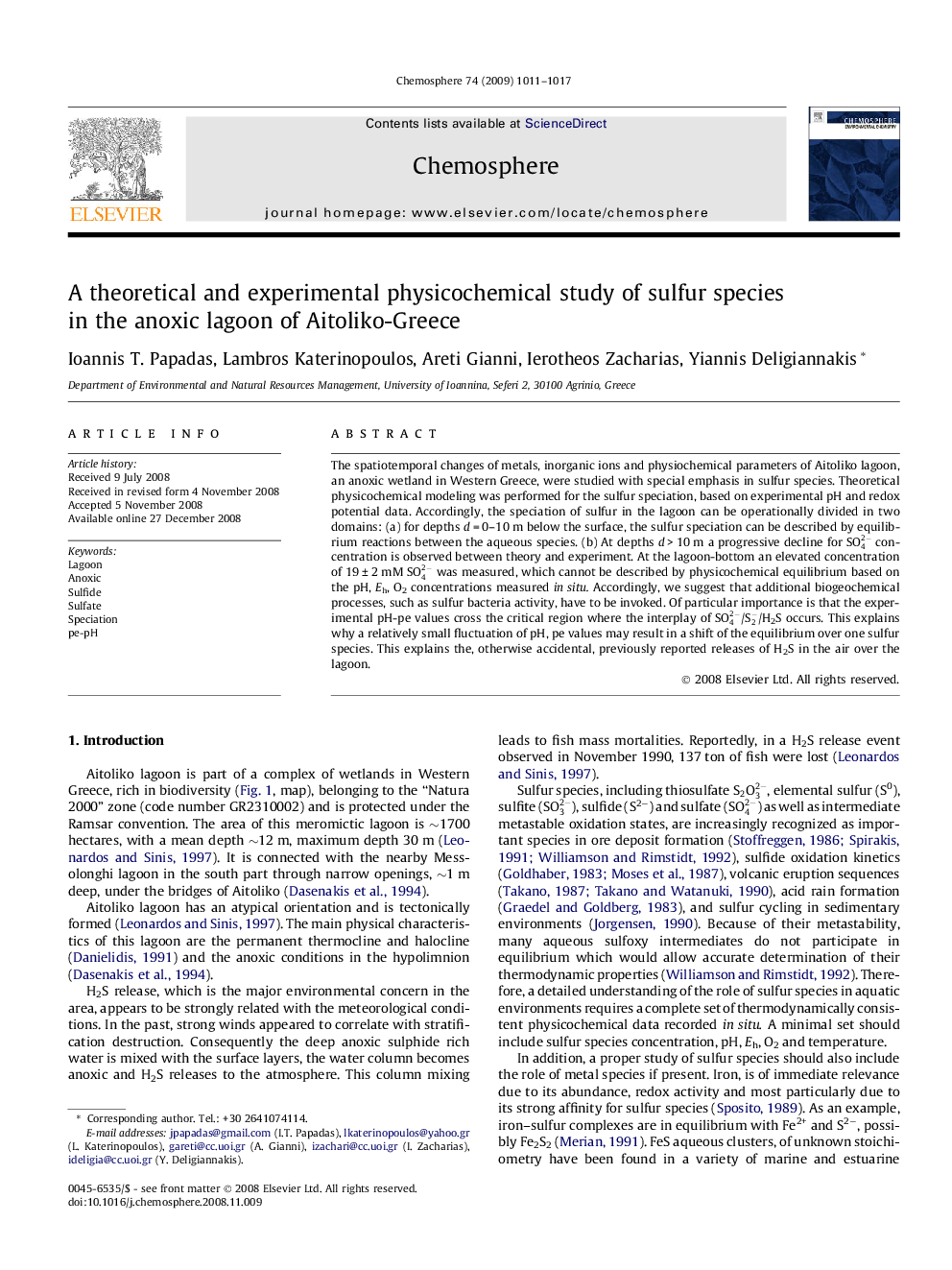| Article ID | Journal | Published Year | Pages | File Type |
|---|---|---|---|---|
| 4413257 | Chemosphere | 2009 | 7 Pages |
The spatiotemporal changes of metals, inorganic ions and physiochemical parameters of Aitoliko lagoon, an anoxic wetland in Western Greece, were studied with special emphasis in sulfur species. Theoretical physicochemical modeling was performed for the sulfur speciation, based on experimental pH and redox potential data. Accordingly, the speciation of sulfur in the lagoon can be operationally divided in two domains: (a) for depths d = 0–10 m below the surface, the sulfur speciation can be described by equilibrium reactions between the aqueous species. (b) At depths d > 10 m a progressive decline for SO42- concentration is observed between theory and experiment. At the lagoon-bottom an elevated concentration of 19 ± 2 mM SO42- was measured, which cannot be described by physicochemical equilibrium based on the pH, Eh, O2 concentrations measured in situ. Accordingly, we suggest that additional biogeochemical processes, such as sulfur bacteria activity, have to be invoked. Of particular importance is that the experimental pH-pe values cross the critical region where the interplay of SO42-/S2-/H2S occurs. This explains why a relatively small fluctuation of pH, pe values may result in a shift of the equilibrium over one sulfur species. This explains the, otherwise accidental, previously reported releases of H2S in the air over the lagoon.
